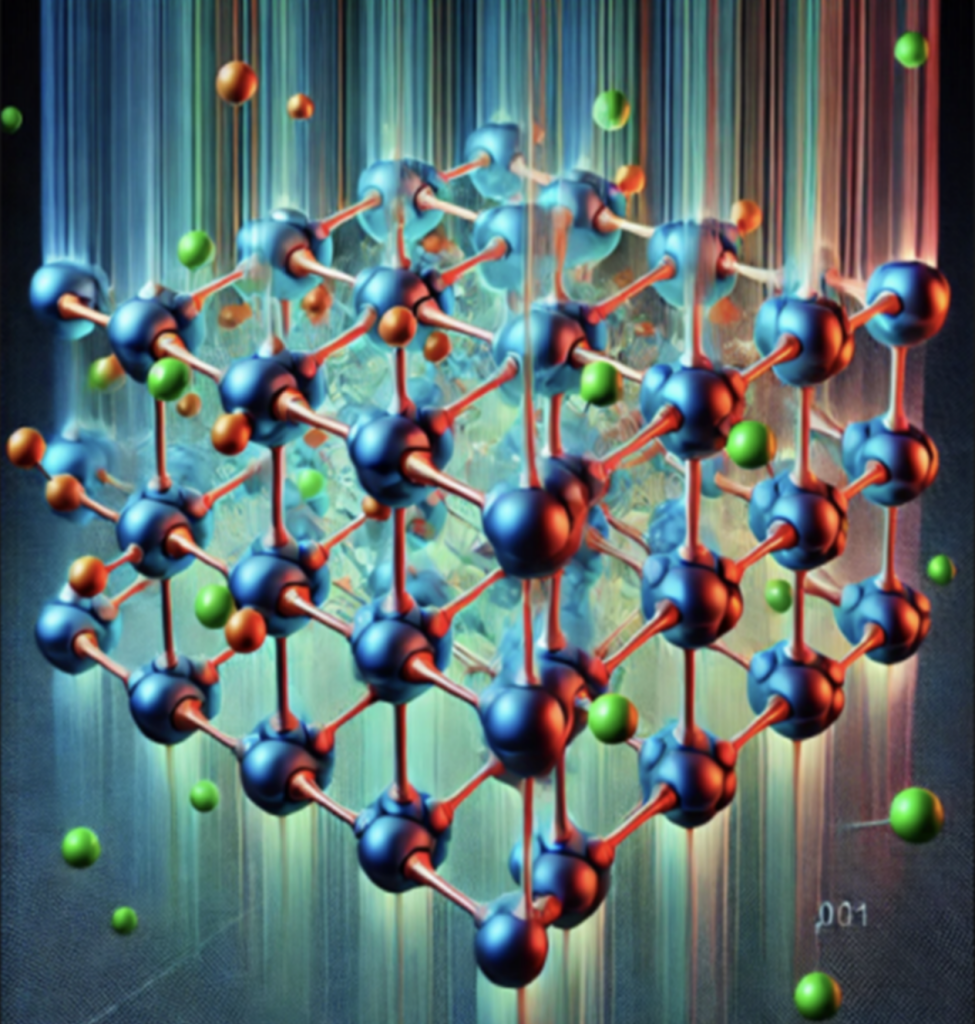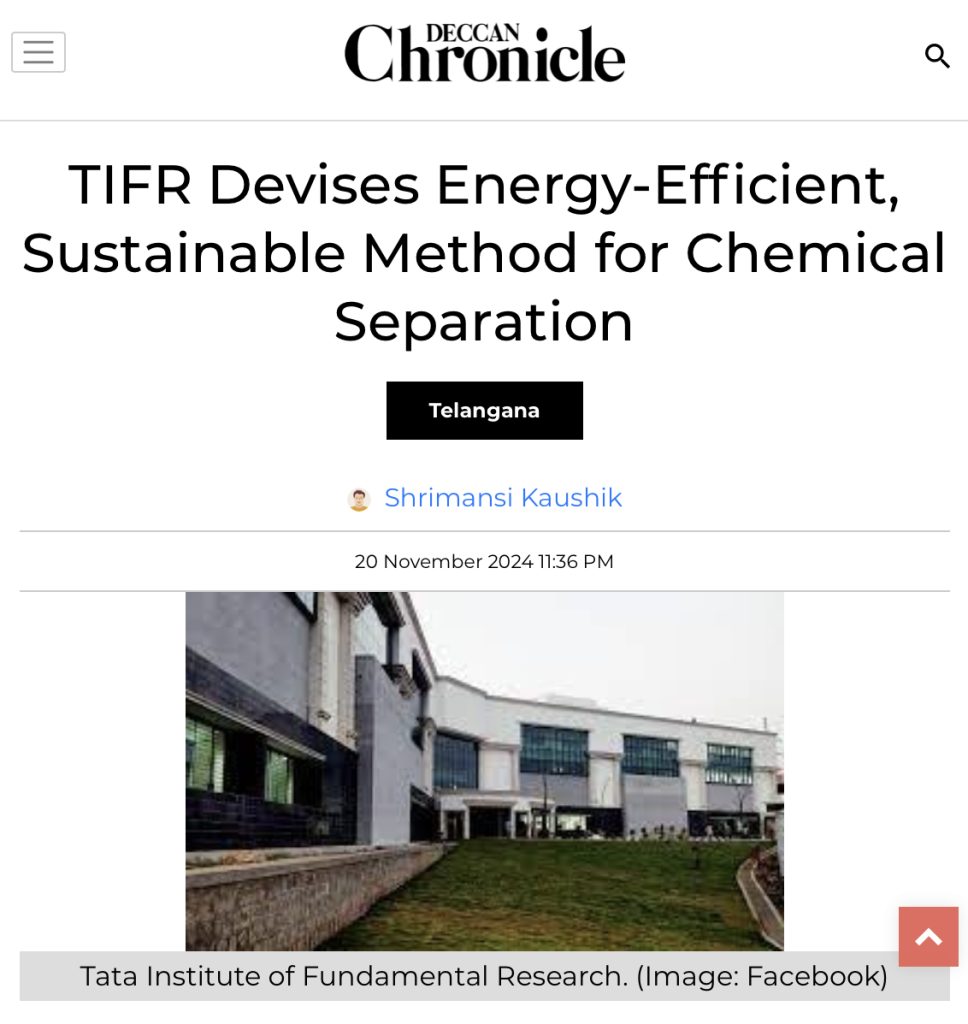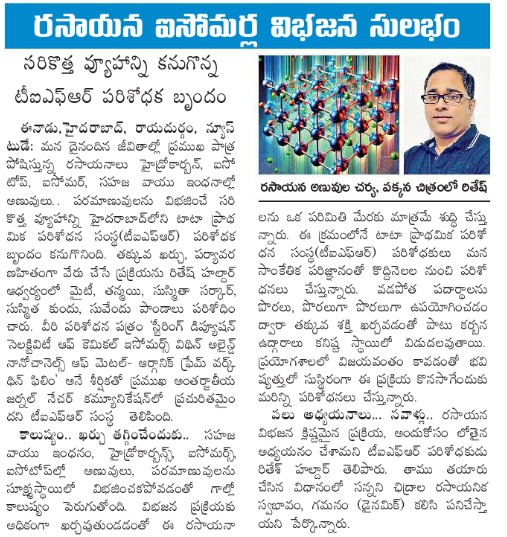New strategy to enhance control over separation of chemical isomers
Chemical (gas, hydrocarbons, isotopes, isomers) separation technologies are essential to our daily lives. There are ongoing global efforts to simplify separation and purification processes using chemical engineering techniques and new materials. Porous materials, functioning as membranes, can achieve these separations with minimal energy input and a reduced carbon footprint, making the process both economically and environmentally sustainable. However, improving efficiency remains a challenge.

Achieving this requires a deeper understanding and control of molecular interactions and diffusion (movement of molecules in the pores) processes. A research team at Tata Institute of Fundamental Research, Hyderabad, led by Ritesh Haldar, have devised a strategy to enhance control over the chemical diffusion process.
Isomers are molecules that have the same chemical composition but have distinct geometries and as a consequence, differing chemical properties. Separating chemical isomers require fine control over pore size and chemical functionalities. The tiny dimensions of the molecules require pores having dimensions of 10-10 m. Since the isomers differ in size slightly, sometimes in the order of a few angstrom (1 angstrom is one-tenth of a nanometer), coming up with a molecular sieve that can effectively separate out isomers based on size in a challenge. To perform a controlled diffusion experiment, researchers have used a nanoporous ordered material known as metal-organic framework. Using a combination of experiment and molecular simulation, the researchers could come up with a new chemical strategy, dynamic chemical interaction, which can fine tune chemical isomer diffusion. In this methodology, chemical nature and dynamics of the narrow pores work in tandem. They could show that by implementation of this strategy the preference of isomer diffusion can be even reversed.
Jagannath Mondal and Soumya Ghosh’s research groups at TIFR Hyderabad predicted how chemical interactions and pore dynamics would influence molecular movement. Based on their findings, Ritesh Haldar’s team created the perfect porous material to demonstrate this unique dynamic interaction. Using their new method, they successfully separated aliphatic halogen isomers and even showed that the separation preferences could be reversed when needed. This work is now published in Nature Communications.
Publication: Steering diffusion selectivity of chemical isomers within aligned nanochannels of metal-organic framework thin film | Nature Communications
Press release: 20-11-2024, Content: Ritesh Haldar (Accompanying image: Generated by AI)
Press coverage in the Deccan Chronicle and Eenadu.


